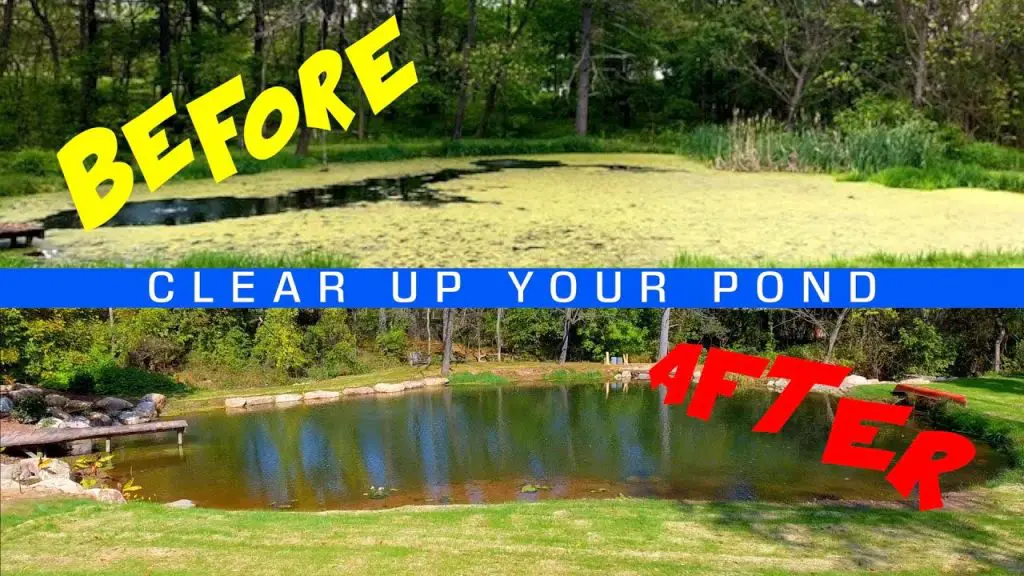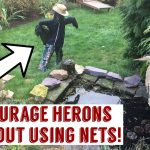Welcome to our comprehensive guide on how to make your pond clear and beautiful. A clear pond not only enhances the aesthetic appeal of your outdoor space but also creates a healthy environment for aquatic life. Whether you have a garden pond, koi pond, or natural water feature, maintaining clear water is essential for the overall well-being of your pond ecosystem. In this article, we will explore various tips and tricks to help you achieve crystal clear water in your pond.

Credit: ozponds.com
1. Proper Filtration System
Investing in a high-quality filtration system is crucial for keeping your pond water clear. There are several types of filtration systems available, including mechanical, biological, and UV filters. Mechanical filters remove debris and particles from the water, while biological filters promote the growth of beneficial bacteria that break down organic waste. UV filters help control algae growth by sterilizing the water. A combination of these filtration systems can effectively maintain water clarity in your pond.
2. Regular Water Testing
Regularly testing your pond water is essential for ensuring optimal water quality. Test kits are available to measure parameters such as pH, ammonia, nitrites, and nitrates. Monitoring these levels allows you to make adjustments as needed to prevent imbalances that can lead to cloudy water or algae blooms. Keeping the water chemistry in check is key to maintaining a clear and healthy pond environment.

Credit: www.youtube.com
3. Adequate Aeration
Adequate aeration is vital for promoting oxygen levels in your pond and preventing stagnation. Installing a fountain, waterfall, or air pump can help oxygenate the water and improve circulation. Oxygen-rich water supports beneficial bacteria growth and inhibits the proliferation of harmful pathogens. Proper aeration also aids in breaking down organic matter, which can contribute to murky water conditions.
4. Regular Cleaning and Maintenance
Regular cleaning and maintenance are essential tasks to keep your pond water clear. Remove debris such as leaves, twigs, and algae from the surface and bottom of the pond. Use a skimmer net or pond vacuum to clean out accumulated waste. Trim back overhanging vegetation to prevent excess organic matter from entering the water. Performing routine maintenance tasks will prevent nutrient buildup and help maintain water clarity.
5. Beneficial Plants
Introducing aquatic plants to your pond can help improve water quality and clarity. Plants such as water lilies, water hyacinth, and hornwort absorb excess nutrients from the water, reducing algae growth and maintaining water clarity. Floating plants provide shade and shelter for fish, while submerged plants oxygenate the water and provide habitat for beneficial bacteria. A well-balanced plant ecosystem can contribute to a clear and thriving pond environment.
6. Avoid Overfeeding Fish
Overfeeding fish can lead to an excess of uneaten food and fish waste in the pond, contributing to poor water quality. Feed your fish small amounts of food that they can consume within a few minutes to prevent overfeeding. Uneaten food decomposes and releases nutrients into the water, fueling algae growth and cloudiness. By feeding your fish responsibly, you can help maintain clear water in your pond.
7. Control Algae Growth
Algae blooms are a common cause of cloudy water in ponds. To control algae growth, limit the amount of sunlight reaching the water by adding shade or installing aquatic plants. Use barley straw or algaecides to inhibit algae growth naturally. Manual removal of algae with a net or brush can also help prevent algae from taking over the pond. By managing algae growth, you can improve water clarity and maintain a balanced pond ecosystem.
8. Consider Beneficial Bacteria
Introducing beneficial bacteria supplements to your pond can help break down organic matter and reduce nutrient levels in the water. Beneficial bacteria aid in the decomposition of fish waste, uneaten food, and other organic debris, resulting in clearer water. These bacteria establish a natural biological balance in the pond, reducing the likelihood of algae outbreaks and promoting water clarity. Regularly adding beneficial bacteria can support a healthy pond environment.
9. Monitor Water Temperature
Water temperature plays a crucial role in the overall health of your pond ecosystem. Extreme temperatures can stress fish and promote algae growth. Maintain a stable water temperature by providing shade, aeration, and appropriate depth for your pond. Avoid sudden temperature fluctuations, as they can disrupt the balance of the pond environment. By monitoring and regulating water temperature, you can help ensure clear and healthy pond water.
10. Seek Professional Advice
If you encounter persistent water clarity issues in your pond despite following the above tips, consider seeking advice from a pond professional or water quality expert. They can assess your pond’s specific conditions and recommend tailored solutions to improve water clarity. Professional guidance can help identify underlying issues and provide targeted strategies to achieve and maintain clear water in your pond.
In conclusion, maintaining clear water in your pond requires a combination of proper filtration, regular maintenance, balanced ecosystem, and proactive management of water quality parameters. By implementing the tips and tricks outlined in this article, you can enjoy a beautiful and healthy pond that enhances your outdoor space. Clear pond water not only benefits the aesthetic appeal of your pond but also supports the well-being of aquatic life. Follow these guidelines to achieve crystal clear water in your pond and create a thriving aquatic environment.





